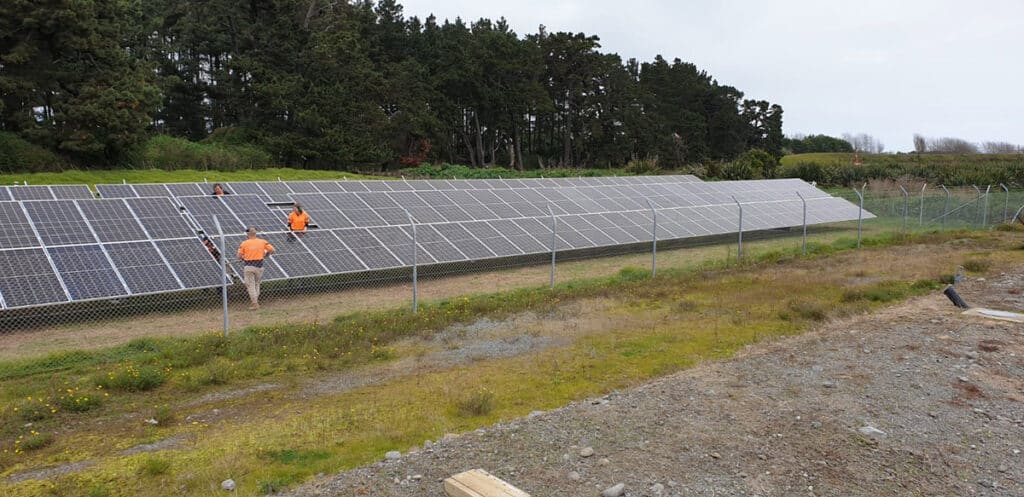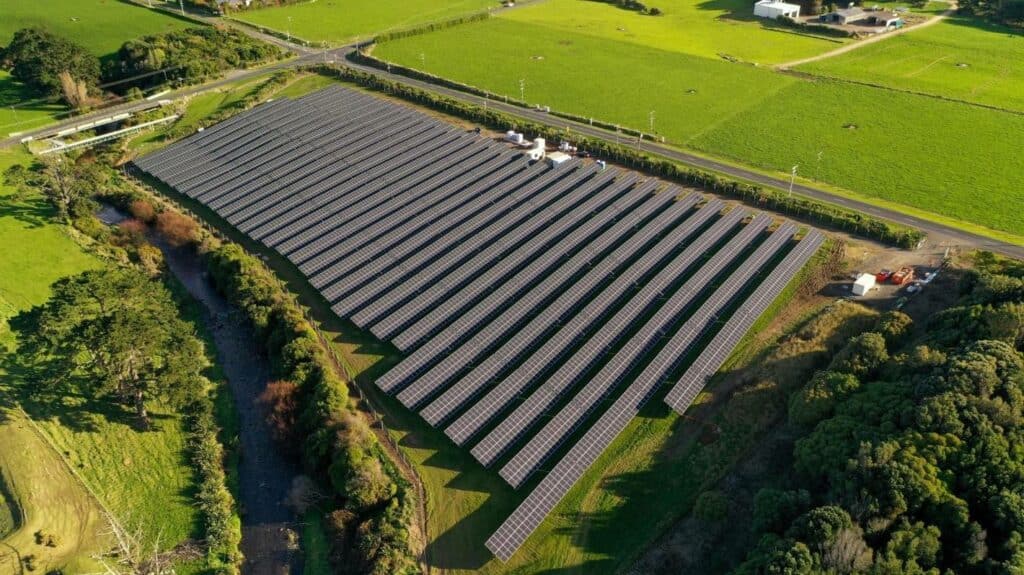By Jake Roos, 21 October 2022
Solar photovoltaic panels have become a mass-market product whose deployment is now being driven by market forces instead of government subsidies. Aotearoa NZ never had subsidies for solar PV – we are reaping the benefits of those set in other countries, some decades ago, that led to development of the industry and the subsequent plunge in costs.
In 2021, the world installed 168GW of solar generating capacity. By contrast, the entire electricity generating capacity of NZ is 9.7GW.
Despite the pandemic, global solar capacity doubled in 3 years from 2018, bringing the world’s solar fleet to 1,000 gigawatts (GW) in April 2022.
The global solar market is growing exponentially. It took around a decade for world-wide solar capacity to reach 1,000 GW, from 100 GW in 2012. Industry group SolarPower Europe predicts global solar to more than double to 2,300 GW in 2025.
The price of solar PV modules has dropped so much that the return investment is favourable even when 100% of the energy is exported to the electricity grid, rather than being consumed on site. This opens up a much wider range of places it can be installed including just out in a field in a ‘solar farm’. Also technology to make panels track the sun by tilting a row of panels over from east to west during a day has become more affordable. This boosts energy production compared to fixing panels in place, improving financial returns.
We are starting to see the solar revolution here in NZ. While PV panels are not exactly a common sight on residential rooftops, there are multiple solar farms that are in the process of gaining resource consent, or that have already got it – a 400 megawatt (MW) proposal near Taupo, another 147MW farm in the Waikato, adjacent Christchurch and Napier Airports, and more besides. Kāpiti has one small solar farm of its own already – Energise Ōtaki’s 110kW installation at the Ōtaki Wastewater Treatment Plant (pictured below).

Brokerage firm Forsyth Barr calculated recently that a total of 1.5GW of installed solar capacity, capable of producing 2.5TWh of power per year, was currently planned for Aotearoa NZ. The businesses planning them are backed by hard-headed investors looking for a low-risk, high yield profit, which tells you something about the strength of the business case for solar PV.
A solar farm using current technology fits about 0.7MW of capacity into a hectare. Very roughly 1.5GW equals requires about 2,100 Ha of land. Using this same metric, doubling NZ’s current generation capacity of 9.7 GW with solar farms would require 13,800 Ha, or 0.13% of NZ’s current exotic grassland (fields). We wouldn’t put in quite this much solar PV for reasons I’ll explain shortly, but clearly in the scheme of things, this isn’t a lot of space. Furthermore, some agricultural activity such as sheep grazing can still happen in and around a solar farm.
Ideally, solar PV would go on the wholly ‘dead’, unused space on rooftops, particularly on commercial buildings, with their vast flat roofs and their locations in the heart of existing electricity distribution networks. However, it’s not that simple. The building owners may not have an interest in developing or managing a solar project themselves. If a third party proposes to rent their roof instead, there are roof warranties and replacement to consider over the solar array’s 25 year+ lifespan, which makes any agreement tricky. Finally, the roof structure in question may need strengthening. These problems are not insurmountable, but clearly for large institutional investors, this isn’t the path of least resistance – hence we’re seeing solar farms move ahead at scale now instead.
So is all this good for the climate? Solar PV panels have emissions associated with their manufacture, even though they have no emissions to operate. Dividing an estimate of these ‘embodied’ emissions by the total production of electricity over their lifetime for a farm located in Kāpiti, I get a figure of 4 gCO2e per kWh generated. Compare this with ~8 g for operating geothermal generation, 390 g for operating natural gas generation or heaven forbid 900+ gCO2e/kWh for new coal-fired electricity, not even counting the embodied carbon in the powerplants themselves. Solar PV’s carbon intensity gets lower the closer to the equator a solar panel is installed, as the annual energy yield per panel or kW is greater, all other things being equal.
And that’s not even the full picture. Since electricity is essential to decarbonising transport and process heat, we’re going to need a whole lot more of it. Really solar energy is going head-to-head with the use of fossil fuels in those sectors, rather than the fossil fuels presently being used within our current electricity system. When all energy is considered, not just electricity, NZ is only 40% renewably powered, so there is still a long way for us to go.
Solar on its own clearly can’t do the job of decarbonising energy because of the issue of energy storage – generation from a solar PV panel corresponds with the amount of sunshine falling on it at any given moment, which is not usually aligned with the local profile of electricity consumption. Our electricity system needs a variety of generation types, ways to store energy for when its needed and ways to shift demand for electricity away from peaks (typically in the morning and evening) and into periods of more plentiful grid capacity and cheaper power. We lack inter-seasonal energy storage in NZ – a way to save power generated in the summer for the winter – which is the reason the government investigating the concept of building a huge energy storage dam in Central Otago. But within this wider context, large scale solar still clearly has a big role to play, as identified by both Transpower and the Climate Change Commission.
It’s highly likely we’ll see solar farm proposals for Kāpiti, and for more panels to go up onto buildings here too. Solar technology is likely to improve even further, becoming cheaper and more versatile, and we’ll see it in a greater variety of places, not just in farms and on roofs. Solar cladding, solar glass, solar paint? The possibilities are exciting. The trick will be directing our limited resources into good investments like solar and away from destructive ones like fossil fuels and building up recycling capacity to deal with end-of-life panels. On this last point at least there is some good news – it’s not that hard to recycle solar PV panels. Building facilities to do this here in NZ is entirely do-able.
Jake Roos is a Kāpiti-based climate change consultant. He has a Masters of Applied Science in Energy Management for the University of Otago and has worked in the field of sustainable energy and emissions reduction for over 20 years.
